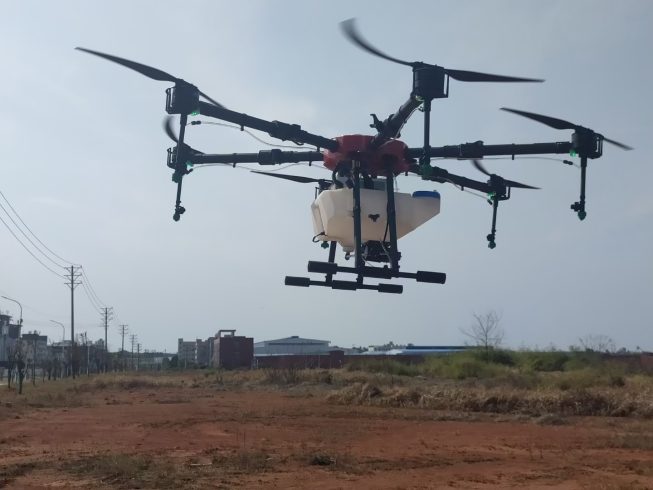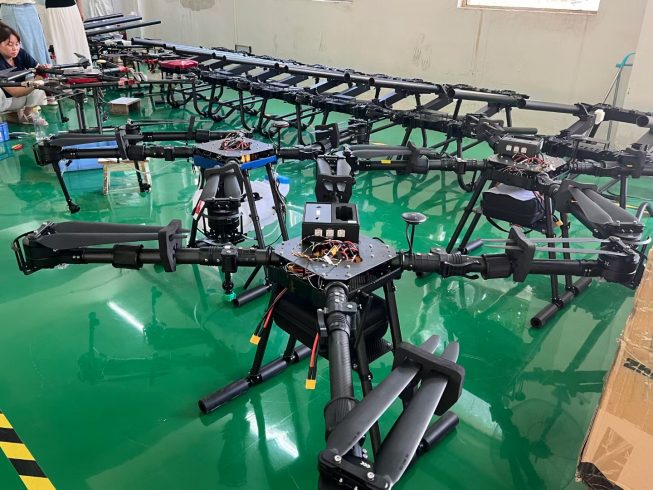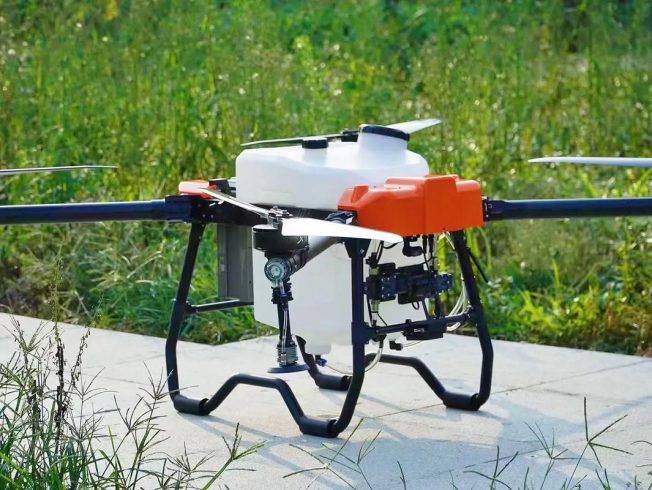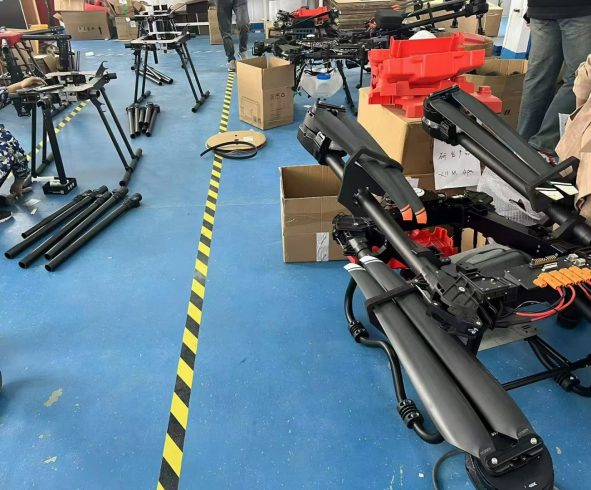
For farmers managing thousands of acres, the annual spraying season is a race against time, pests, and unpredictable weather. Traditional methods—tractor-drawn sprayers, manual backpack units, or small drones limited to niche tasks—struggle to keep pace with the sheer scale of modern agriculture. Enter large-scale field spraying UAVs: purpose-built unmanned aerial vehicles engineered to dominate vast landscapes with unmatched speed, pinpoint accuracy, and relentless reliability. These are not just tools; they are force multipliers for large farms, turning daunting acreage into manageable, profitable operations.
The Scale Challenge: Why Traditional Spraying Falls Short
Large-scale farming presents unique hurdles that smaller setups rarely encounter:
-
Time Pressure: Pests and diseases don’t wait for tractors to finish a 5,000-acre field. Delays of even 48 hours can lead to 10–20% yield losses.
-
Terrain Limitations: Rolling hills, wetlands, or narrow crop rows render tractors inefficient or unusable, forcing farmers to resort to slower manual methods.
-
Inconsistent Coverage: Large fields amplify human error—missed spots, overlapping sprays, or uneven chemical distribution—wasting inputs and compromising crop health.
-
Labor Scarcity: Finding skilled operators for massive spraying crews is increasingly difficult, especially during peak seasons.
These challenges make speed and accuracy non-negotiable for large farms. And that’s where large-scale UAVs excel.
Engineering Speed: Covering Acreage at Unprecedented Rates
Designed for marathon, not sprint, large-scale spraying UAVs redefine “fast” in agriculture:
High-Capacity Payloads & Rapid Refills
Unlike hobbyist drones, these UAVs carry 20–40 liters of liquid (pesticides, fertilizers, or herbicides)—enough to treat 50–100 acres per tank. Paired with quick-swap batteries and modular tanks, downtime is minimized: a team can refill and relaunch a drone in under 10 minutes.
Multi-Drone Swarms for Parallel Processing
The true power lies in scalability. Farms can deploy 5–10 UAVs simultaneously, coordinated by a central command system. This swarm approach turns a 10,000-acre field from a week-long task into a 2-day operation—without sacrificing precision.
Wind-Resistant Design for All-Day Operation
Built with reinforced frames and powerful motors, these UAVs maintain stability in winds up to 20 mph (32 km/h). Unlike tractors, which halt in bad weather, drones can work around the clock, seizing windows of opportunity when conditions briefly improve.
Precision at Scale: No Acre Left Behind
Speed means nothing if accuracy is compromised. Large-scale UAVs achieve both through advanced tech:
RTK-GPS & Centimeter-Level Mapping
Real-Time Kinematic (RTK) positioning ensures drones follow pre-mapped routes with 2–3 cm accuracy—critical for avoiding overlaps or gaps in massive fields. Multispectral cameras create detailed field maps, identifying pest hotspots, nutrient deficits, or weed clusters before spraying begins.
Variable Rate Application (VRA)
Instead of blanketing the entire field, UAVs adjust spray rates dynamically. A patch of spider mites gets a concentrated dose; healthy wheat receives none. This cuts chemical use by 25–35% compared to tractor sprayers, saving thousands in input costs.
Adaptive Flight Paths for Complex Terrain
Hills, valleys, and obstacles like power lines are no match. Drones use LiDAR sensors to map terrain in real time, adjusting altitude and speed to maintain optimal spray distance (1–3 meters above crops). Even steep slopes are covered uniformly.
Case Study: Transforming a 12,000-Acre Corn Farm
To illustrate the impact, consider a Nebraska corn farm spanning 12,000 acres. Historically, tractor-based spraying took 21 days, required 8 full-time operators, and used 18,000 gallons of herbicide (with 30% waste). After adopting 8 large-scale UAVs:
-
Time Reduced by 70%: The same field was sprayed in 6 days, including refills.
-
Labor Cut by 75%: Only 2 operators managed the swarm via a single tablet.
-
Chemicals Saved by 28%: VRA and precise targeting lowered usage to 13,000 gallons.
-
Yield Protected: Early pest detection (via drone cameras) prevented a 15% outbreak, adding $180,000 in revenue.
Beyond Spraying: Integrated Farm Management
Modern large-scale UAVs are more than sprayers—they’re data hubs. Post-flight, they upload:
-
Coverage maps showing missed areas.
-
Chemical usage reports for compliance.
-
Crop health indices (NDVI) to guide future fertilization.
Farmers use this data to refine next season’s strategy, creating a cycle of continuous improvement.
The Future of Large-Scale Farming: Drones as Standard Equipment
As global food demand rises and labor pools shrink, large-scale UAVs will transition from “innovative” to “essential.” Manufacturers are already developing next-gen models with:
-
Solar-assisted batteries for extended flight times.
-
AI-driven pest prediction to preempt outbreaks.
-
Autonomous charging stations that recharge drones mid-mission.
Conclusion: Dominate Acreage, Don’t Just Manage It
For large farms, spraying isn’t just a chore—it’s a battle for yield and profitability. Large-scale field spraying UAVs arm farmers with the speed to outpace threats and the accuracy to protect every plant. They turn “impossible” acreage into “efficient” operations, proving that in modern agriculture, size doesn’t matter—how you cover it does.
THE END










暂无评论内容